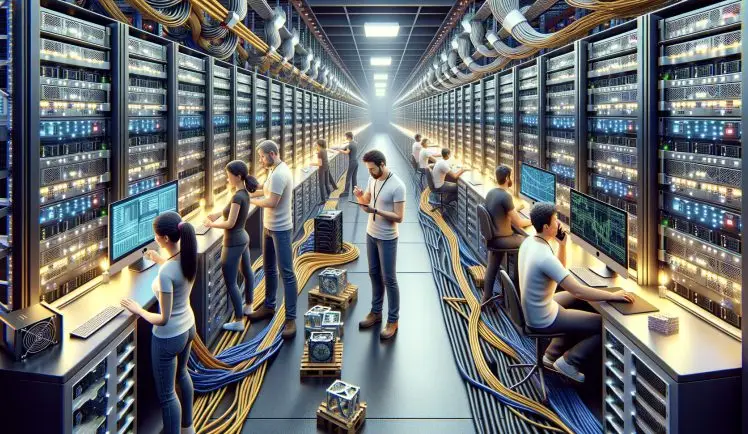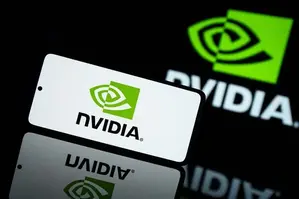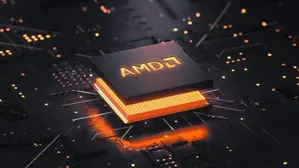Your guide: What is a Cryptocurrency Farm?
People who are involved in the busy crypto market are always looking for ways to make the most money. Setting up cryptocurrency farms is one method that has gained a lot of popularity. These digital mining operations are now the backbone of many blockchain networks. If you’ve ever wondered, “What is a Cryptocurrency Farm?” then you’ve come to the right place.
Also read: Russia Legalizes Crypto Mining: How It Helps Evade Sanctions

What is cryptocurrency farming all about?
Cryptocurrency farming, which is also known as mining, is the process of solving hard math problems with special hardware. These tools check that transactions are legitimate and add new blocks to a blockchain. In essence, crypto farms are big businesses that house a lot of mining rigs that work nonstop to earn digital rewards.
The idea of mining is similar to traditional gold mining, which requires a lot of work and resources to get valuable things out of the ground. In the digital world, miners compete to find the right answer to a cryptographic puzzle. The winner gets new coins and transaction fees as a reward.
How Crypto Farms Work: The Infrastructure
A strong technological base is what every cryptocurrency farm is built on. To work well, these buildings need to have a lot of money spent on hardware, cooling systems, and electricity. Here are some of the most important parts of a typical crypto farm:
- Hardware for mining: The specialized mining rigs are what make a crypto farm run. These can be anything from powerful graphics processing units (GPUs) to application-specific integrated circuits (ASICs. They are made just for mining certain cryptocurrencies.
- Cooling Systems: The intensive computing work creates a lot of heat. High-tech cooling solutions are a must to keep the equipment running at its best and avoid damage.
- Power Supply: Crypto farms use a lot of electricity. They usually need their own power sources to make sure they have a steady, power supply.
- Network Infrastructure: For miners to stay in touch with the blockchain network and other miners, they need fast internet connections.
- Management Software: Complex software programs are used to keep an eye on and improve the performance of mining rigs. This helps. to make sure they work as efficiently and profitably as possible.
How much does it cost to farm cryptocurrency?
Anyone who wants to get into crypto farming needs to know how the money side of things works. How profitable a mining operation is depends on several things, including:
- Hardware Costs: The initial investment in mining equipment can be big; for example, a top-of-the-line ASIC can cost several thousand dollars.
Costs of electricity: For crypto farms, the biggest ongoing cost is often the power they use. Places that can get cheap, reliable electricity have an edge over others. - Cryptocurrency Prices: The value of mined coins has a direct effect on how much money you can make. Market volatility can have a big effect on the bottom line of a farm.
- Mining Difficulty: As more miners join a network, it gets harder to solve cryptographic puzzles, which could mean that each miner gets less money.
- Maintenance and Upgrades: To stay competitive in the mining world, your hardware needs to be up-to-date.

Tips for Running the Best Mining Operations
Crypto farmers who are good at what they do use a variety of methods to get the most money and stay ahead in this competitive field. This is a key way to do things:
- Diversification: Mining more than one cryptocurrency can help lower the risks that come with changes to the network and price fluctuations.
- Pool Mining: When smaller operators join mining pools, they can pool their resources and share the rewards, which makes their income more stable.
- Optimization of energy use: Using energy-efficient methods and looking for renewable power sources can cut costs by a large amount.
- Monitoring all the time: using high-tech management tools to keep an eye on performance indicators and quickly fix any problems that come up.
Strategic Upgrades: Knowing about the newest hardware developments and replacing old hardware when it’s no longer expensive to do so.
Sustainability and Thinking About the Environment
In recent years, the damage that cryptocurrency mining does to the environment has become a very important issue. Large-scale mining operations use a lot of energy, which has made people worry about carbon emissions and the environment. Because of this, many crypto farms are looking into eco-friendly alternatives:
- Renewable Energy: To lower their carbon footprint, some farms are moving to places with lots of hydroelectric, solar, or wind power.
- New ideas are being worked on to find creative ways to use the heat that mining rigs produce for other things, like heating greenhouses or buildings.
- Carbon Offsetting: To balance out their effects, some operators buy carbon credits or give money to environmental projects.
- Efficiency Gains: Mining hardware is still being researched and developed so that it can use less energy and have more computing power.

Regulatory Landscape and Following the Rules
As more people become interested in cryptocurrency, governments around the world are taking a closer look at mining operations. Crypto farm operators have to deal with a legal landscape that is always changing:
- Need for Licenses: In some places, large-scale mining operations now need special licenses.
- Tax Effects: For long-term success, it’s important to understand and follow the tax rules that apply to cryptocurrency mining.
- Limits on Energy Use: Some areas have put limits on how much energy can be used for crypto mining, or they are thinking about doing so.
- Data Center Rules: Because crypto farms look a lot like regular data centers, they might have to follow the same rules set by regulators.
What’s Next for Cryptocurrency Farming?
As the blockchain industry grows, crypto farms will likely play a different role. The future of this sector will continuously grow. For example:
- More professionalization: small-scale mining done from home is giving way to large operations run by professionals.
- Improvements in technology: New mining algorithms and hardware change crypto farming.
- Integrating Cryptocurrencies with Traditional Finance: As cryptocurrencies become more popular, mining operations may find new ways to work together with traditional banks.
- Decentralized Mining: Some projects are looking into ways to spread mining power more evenly, which could make large farms less powerful.
- Adapting to new rules and regulations: The industry will have to keep changing with the times and fighting for good rules and regulations.
Conclusion
Cryptocurrency farms are like the gold rush of our time, with people looking for wealth in the deepest parts of blockchain technology. These tasks will become more important as the cryptocurrency industry grows because they keep networks safe and working. Anyone who wants to work in this field needs to know a lot about economics, technology, and rules and regulations.






